I'm currently trying to display files we've got in a directory. For this I'm using the IFileProvider / ContentRootFileProvider with it's method GetDirectoryContents(string path). It works like a charm on my local maschine with IIS in Visual Studio, but not on Azure. If I execute it locally, it shows every file with its details. But as soon as I try to run it on Azure, I only get files which are < 28MB. After googling a bit I tried editing the web.config on Azure and including the web.config into my project. Sadly both cases didn't work and I still just got files which were smaller than 28MB.
My edit to the web.config:
<security>
<requestFiltering>
<!--400 MByte-->
<requestLimits maxAllowedContentLength="419430400" />
</requestFiltering>
</security>
Any help would be much appreciated.


